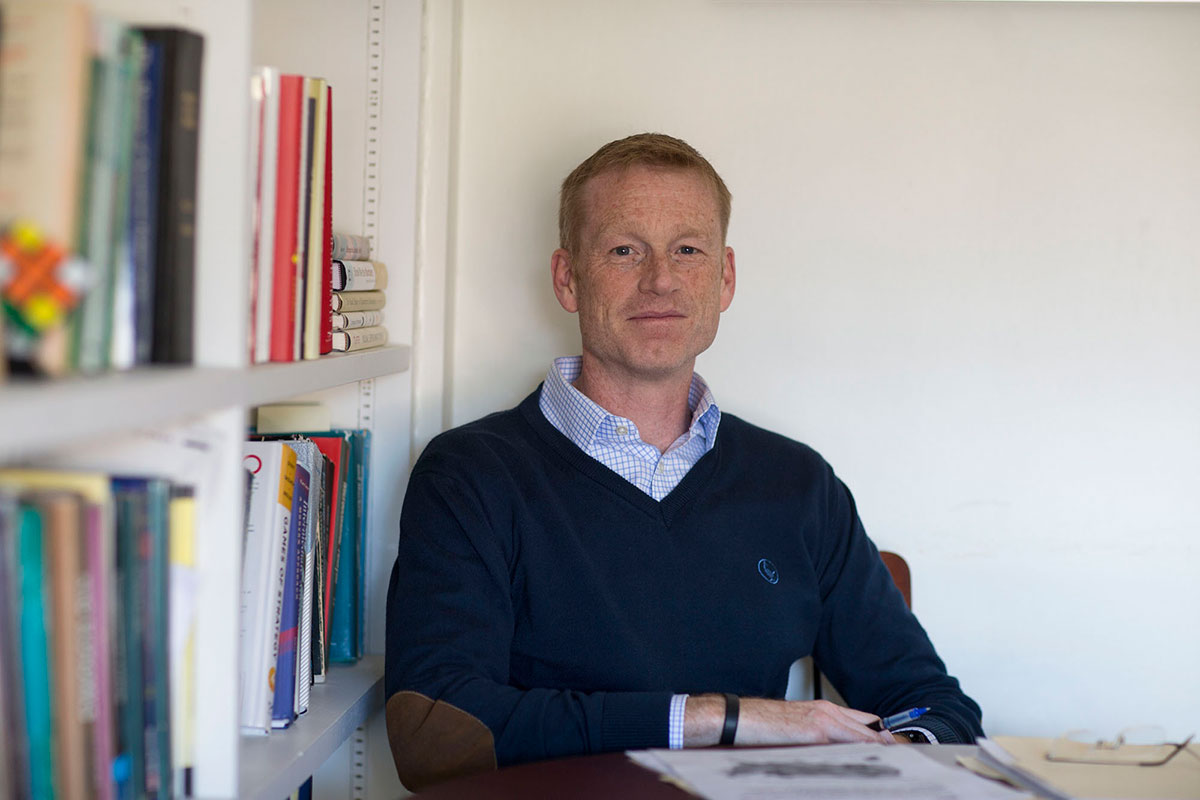Two recent reports show that the U.S. economy is not growing at a healthy rate, despite a low unemployment rate and increases in wages. Coming amid uncertainty in global markets, these reports have fueled speculation about long-term stagnation, or even another recession.
America’s gross domestic product – a measure of output and income typically used to gauge the health of an economy – grew only 0.7 percent during the last quarter of 2015, according to a preliminary report released by the Bureau of Economic Analysis on Jan. 29. Over the entire year, GDP grew by just 2.4 percent.
The Bureau of Labor Statistics’ January report showed more positive signs, with 151,000 jobs added in January and an unemployment rate of 4.9 percent, considered very healthy by most economists.
To explain this discrepancy between strong employment statistics and underwhelming growth, UVA Today turned to associate economics professor Lee Coppock.
Q. When analyzing these two reports, what worried you?
A. Overall, 2015 was not a good year for America’s GDP. The 2.4 percent growth rate is lower than the long-run historical average. More than that, there was really only one good quarter in the year – the second quarter, when GDP increased by 3.9 percent. The year ended on a pretty low note, with only 0.7 percent growth.
On the other hand, the 4.9 percent unemployment number is good news, as most economists believe that optimal unemployment hovers around 5 percent.
Q. Does the low GDP growth indicate any concerning long-run trends?
A. It’s possible. The term “secular stagnation” has become a popular buzzword in economics recently. It refers to the worry that our economy is not going to grow as much as it has in the past. We have picked many of the low-hanging fruit, with booms caused by events like the spread of electricity or the entrance of women in the workforce. Many very smart economists are worried that there are now fewer opportunities for massive growth and that we are headed for a new normal of lower growth.
Q. Do you agree?
A. I am not 100 percent on board with the idea that we are heading for secular stagnation, and I do not want to draw long-run conclusions from a few data reports. However, if we were in a period of secular stagnation, these are the kind of reports that you would see.
Unemployment is low, which means that we have lots of workers available, but we are not producing that much, which means that worker productivity is down. Technological innovations are not increasing everyone’s productivity and income in the same way that they have in the past.
Q. What other statistics stood out to you?
A. Adding 151,000 jobs in January was good news, but we still have a very low labor force participation rate, meaning that more and more workers are sitting on the sidelines of the economy. The labor force refers to the portion of the population – excluding children under 16 and institutionalized adults – that is either working or has been actively looking for work in the past month. That number, as a portion of the overall population, has been shrinking. In 2008, just before the recession began, the labor force participation rate was 66 percent. Now, that rate is 62.7 percent.
Q. What does a lower labor force participation rate mean?
A. The drop from 66 percent to 62.7 percent might not seem like a lot, but it essentially represents 8 million workers. If those 8 million workers entered the labor force tomorrow and did not have a job, the unemployment rate would go from 4.9 percent to 9.65 percent, which is pretty terrible. More realistically, if half of those 8 million workers entered the labor force tomorrow without a job, the unemployment rate would rise to 7.3 percent. That feels more like the economy that I live in, an economy that is not experiencing a lot of growth and has a bit higher real unemployment than is reflected in the January report.
Q. There have been rumblings about another recession in the media and among some economists. Does that seem likely to you?
A. I do not think that these reports indicate a recession on the horizon. The economy added 151,000 jobs in January and has been adding jobs every month since the end of 2010, meaning that millions of jobs have been added. However, the quality of those jobs is not as high as it has been in the past. Additionally, the lower labor force participation is acting as a drag on the economy, as fewer people are participating in productive activities. So, while I do not see us heading into another recession at the moment, it does seem like this new post-recession economy might not have great growth for a while.
Q. Given these reports, what do you see on the horizon for 2016?
A. I do not see us sitting on the cusp of a big growth year. I would expect another year similar to 2015, with GDP growth rates around 2 or 3 percent. That could give more fodder to those that believe we are headed for a period of secular stagnation, with standards of living not improving as rapidly as in the past. That could have an impact on things like tax revenues or the payment of government deficits and debts, which is certainly something to keep in mind during the coming year.
Media Contact
Article Information
February 8, 2016
/content/qa-us-economy-stagnating-despite-low-unemployment-numbers

